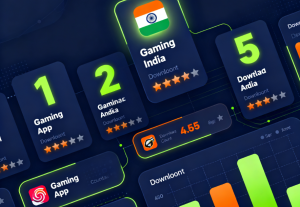The Role of Data Analytics in Modern Lottery Systems
Lottery data analytics has emerged as a game-changer for operators seeking to optimize player engagement, enhance revenue streams, and stay ahead in a competitive market. By leveraging advanced algorithms and machine learning, lotteries can now predict trends, personalize experiences, and identify profitable opportunities with unprecedented accuracy.

Key Applications of Lottery Analytics:
- Real-Time Data Processing: Analyzing player behavior, purchase patterns, and draw outcomes to adjust strategies dynamically.
- Predictive Modeling: Forecasting future trends based on historical data to inform marketing campaigns and game design.
- Player Segmentation: Categorizing users by demographics, spending habits, and risk tolerance to tailor incentives.
For instance, platforms like CROWN11 utilize real-time analytics to offer dynamic promotions, ensuring players receive targeted rewards that boost retention and spending.
Key Metrics for Lottery Data Analytics
To measure success, operators rely on a mix of quantitative and qualitative metrics:
| Metric | Definition | Impact on Strategy |
|---|---|---|
| Player Retention Rate | Percentage of users returning weekly/monthly. | Guides loyalty program adjustments. |
| Conversion Rate | Ratio of new sign-ups converting to active players. | Informs user acquisition cost models. |
| Average Revenue Per User (ARPU) | Total revenue divided by active users. | Prioritizes high-value engagement tactics. |
| Return on Investment (ROI) | Profitability of marketing campaigns and game updates. | Optimizes budget allocation. |
By tracking these metrics, operators can refine their approach. For example, a 10% increase in ARPU through personalized offers could justify reinvesting in data-analytics tools.
Advanced Strategies for Lottery Operators
1. Dynamic Pricing Models
Adjust ticket prices based on demand, player behavior, and external factors (e.g., holidays). For instance, offering discounted tickets during low-traffic periods can attract price-sensitive users.
2. Personalized Recommendations
Use machine learning to suggest games, bonuses, or draws based on individual preferences. Players who frequently engage with scratch cards might receive tailored promotions for similar games.
3. Dynamic Reward Systems
Implement tiered loyalty programs where rewards escalate with spending. A player reaching ₹10,000 in bets might unlock a free spin on CROWN11’s 777 Lucky Slot, boosting engagement.
Case Study: Success with Lottery Data Analytics
A leading Indian lottery platform, CROWN11, doubled its monthly revenue by integrating data analytics into its operations:
- Challenge: Declining player retention due to generic promotions.
- Solution: Deployed predictive analytics to identify high-value users and offer them exclusive jackpot access.
- Result:
- 20% uplift in player retention.
- 3x ROI on promotional campaigns.
- Average withdrawal requests increased by 40%.
This case underscores the transformative power of data-driven strategies in the lottery sector.
Future Trends in Lottery Analytics
Emerging technologies are set to redefine the industry:
- AI-Powered Predictions: Enhancing jackpot forecasts and identifying fraudulent activity.
- Blockchain Integration: Ensuring transparency in payouts and player trust.
- Hyper-Personalization: Leveraging AI chatbots to offer real-time support and tailored incentives.
Conclusion: Embrace Data to Stay Ahead
Lottery data analytics is no longer optional—it’s essential. Platforms like CROWN11 exemplify how strategic data use can drive profitability, engagement, and innovation. By adopting dynamic pricing, personalized rewards, and cutting-edge technology, operators can unlock new revenue streams and build lasting player relationships.
Learn more about CROWN11’s innovative strategies by visiting www.crown11app.comtoday.
Related Reading:Crown11 Ethical Gaming: Fair Play, Transparency, and Social Responsibility in Indian Casinos











